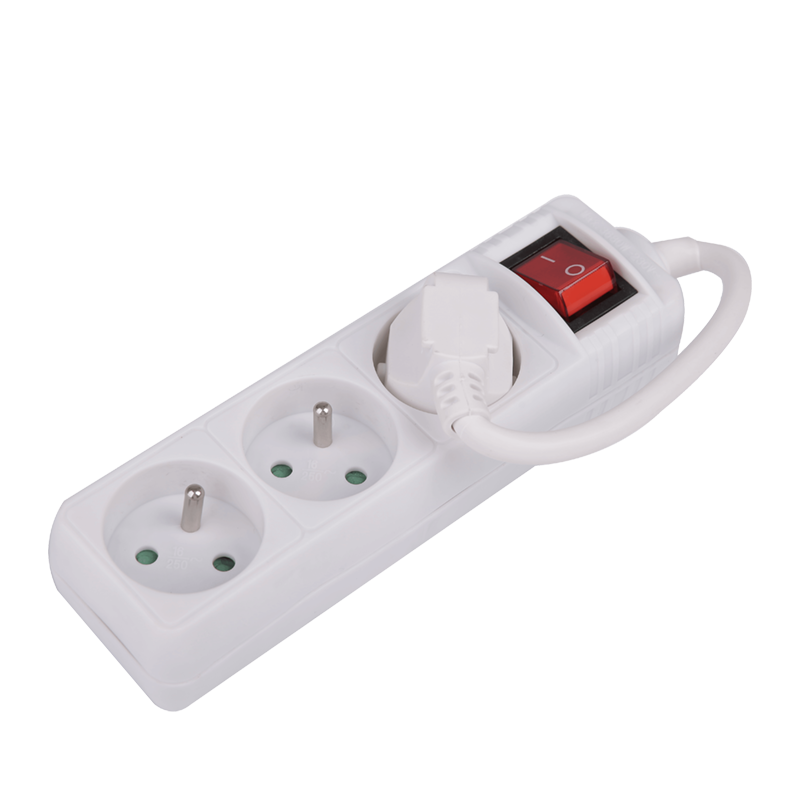PDUs VS Power Strips
No matter what type of computer equipment you have for your facility, it will all be useless if you aren’t able to supply it with reliable electricity. When placing servers, switches, routers, computers, and other devices into an equipment rack, you need to make sure you have plenty of places to plug them all in, and that they won’t overload the circuit. This generally leaves you with two main options: you can use a power strip, or a power distribution unit (PDU). Understanding what each one is capable of will help you to decide which power distribution option is best for you.

What is a Power Strip?
power strip
Almost everyone has used a power strip at some point. They simply plug into one wall outlet, then have a length of the power cord, ending in a ‘strip’ of electrical outlets. There are many different models that offer different length cords, different numbers of outlets, and much more. Some of the key options you’ll have with a power strip include:
Length of Cord – You can find power strips that have cords ranging from a foot or less, or up to many feet, so you don’t need an extension cord in many situations.
Number of Outlets – Power strips typically range from 4-12 outlets, though there are certain models that can have many more.
Surge Protection – Advanced power strips will have a surge protector built in to help protect your equipment from sudden surges in electricity. This can also help to ‘clean’ the electricity for a steady current that won’t damage equipment.
Mounting Options – While most power strips will just lay on the ground next to the equipment, there are some options that can be mounted onto walls or even server racks.
Power Capacity – There are power cords designed for all levels of amperages and volts.
Outlet Type – You can find power strips with any type of plug or receptacle or even a combination of various types, so you can plug in all your equipment.
Power strips are undoubtedly one of the most popular and useful types of electrical equipment for the average person or company. They are typically very affordable and provide exceptional convenience and even protection in many environments. In the vast majority of situations in the home, and even in many small business environments, a high-end power strip is a perfect way to ensure you can get electricity to the devices that need it.
What is a Power Distribution Unit?
At its most basic level, a power distribution unit, or PDU, serves the same function as a power strip. It allows you to put electrical outlets where they are needed. This, however, is just the beginning of what functionalities a PDU has to offer. PDUs are a much more advanced piece of equipment and offer a lot of ‘smart’ options that can be extremely valuable in many environments. Depending on the model you choose, a PDU will have all the features listed above that a power strip has, plus the following important options:
Control Power to Outlets Remotely – PDUs can be accessed through your network so you can remotely turn on and off power to each outlet individually as needed.
Measure Electrical Usage – PDUs will typically measure how much electricity is being used by each outlet. You can then run reports to monitor what equipment is using the most electricity, which can be essential for troubleshooting and power planning.
Data Security – The information gathered by the PDU will be secured using passwords and other options to help ensure no unauthorized users are able to gain this information or control your electrical equipment.
Cable Organization – PDUs are often designed to help make cable organization and retention much easier. For example, you can typically lock an outlet so that the device plugged into it can’t be accidentally pulled out.
Environmental Monitoring – Many PDU models come with environmental monitors to help provide you with information related to the specific area where they are used. These monitors can include humidity sensors, temperature sensors, and much more. You can even set up alerts to notify you if any reading is outside of acceptable levels.
Load Balancing – If you have power on multiple different circuits or sources going into a PDU, the device can help with load balancing so that neither source is overwhelmed.

 English
English 简体中文
简体中文 English
English









